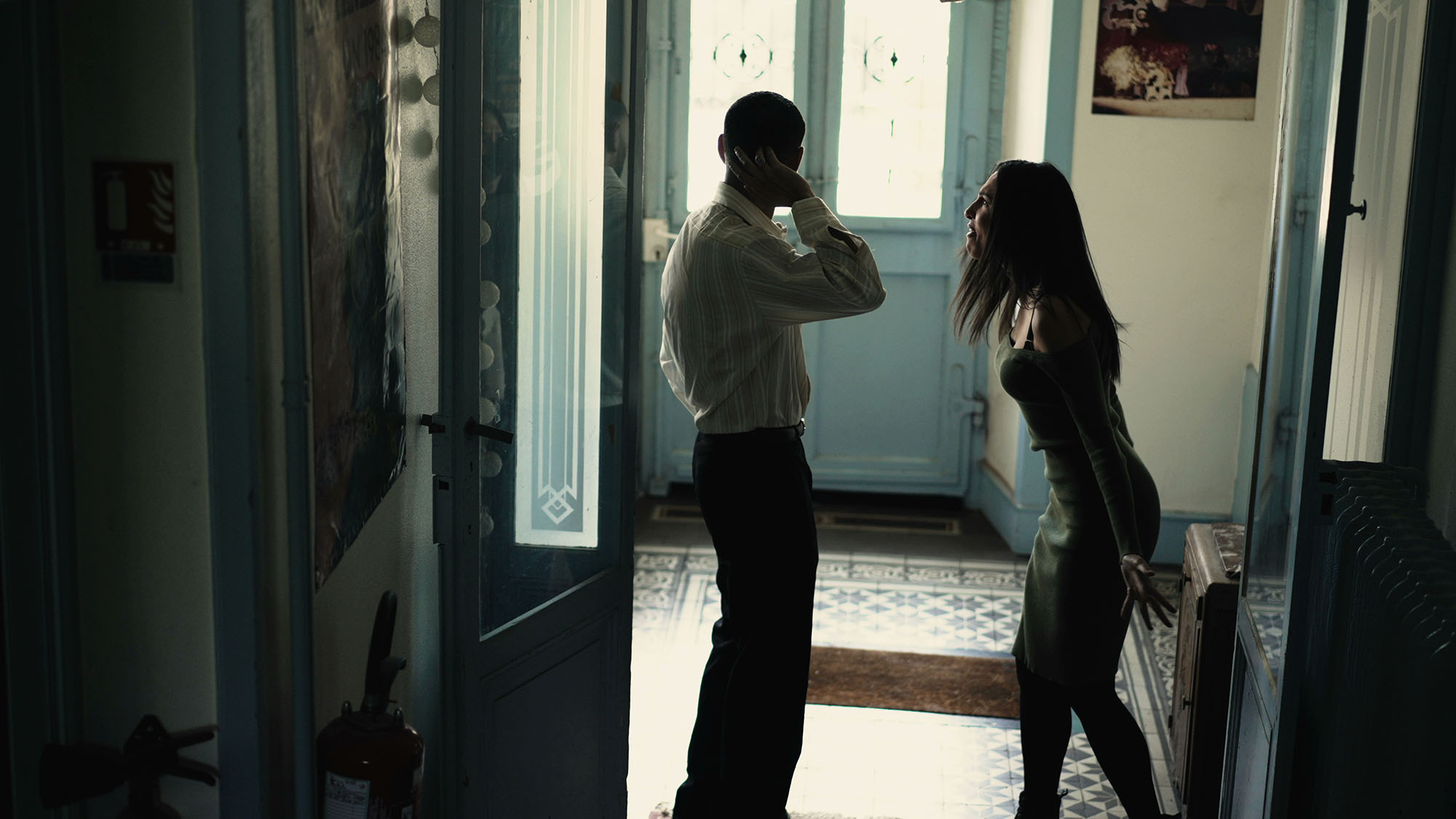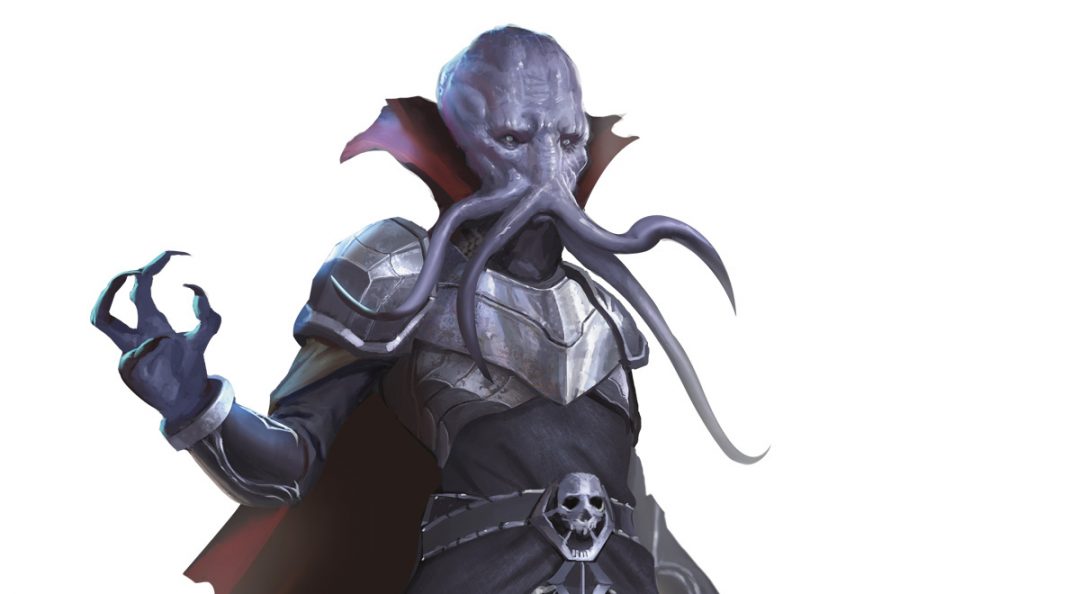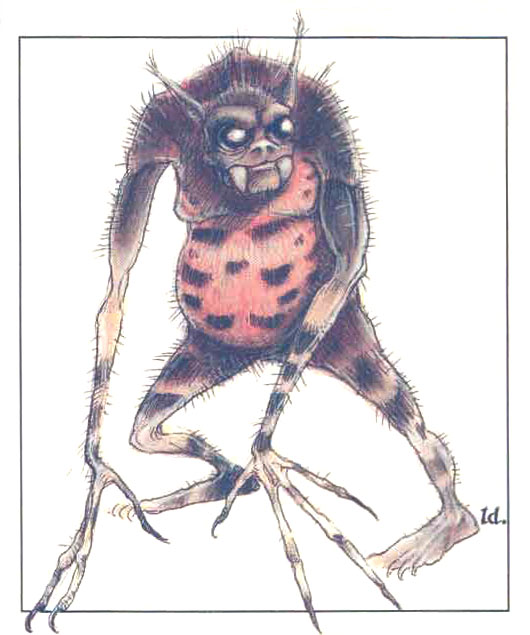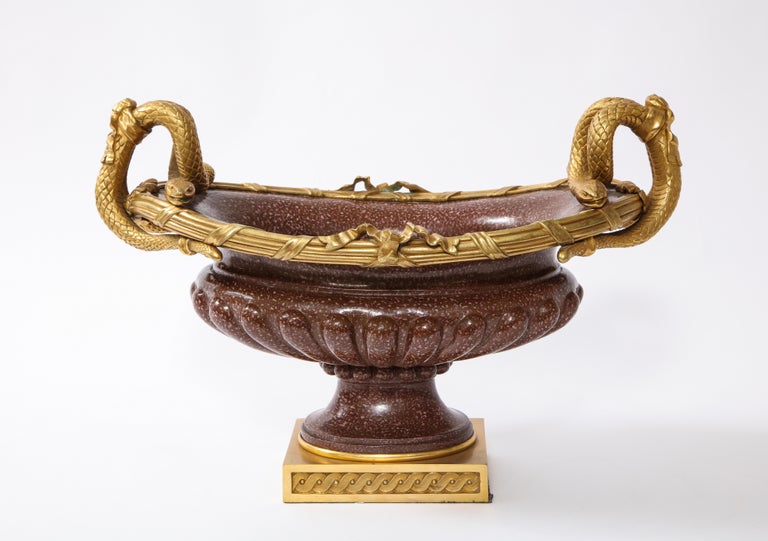
DISCUSSING
In the Shadow of the Spire – Session 43C: Battle of the Banewarrens
They had pushed the lamia back into the generator chamber itself, but discovered that the darkness extended even here.
Tor, hanging close to the lamia in an effort to keep her under control, was taking a terrible beating. He called out for help. Nasira, still standing outside the area of magical darkness, shook her head. “I don’t want to go in there.”
But she plunged in anyway. They needed her, after all.
The exact details of how you need to handle magical darkness — particularly the mechanical details — will depend on exactly how it’s defined in your RPG of choice. For the purposes of this discussion, let’s assume that magical darkness
- fills a specific three-dimensional area; and
- nullifies and blocks all light within the area.
So no light source within the area will illuminate and you also can’t see light (or anything else) on the far side of an area of magical darkness. (As opposed to normal darkness, in which you could see a distant light even if you couldn’t see some of the intervening space due to a lack of illumination.)
In real life, if you had to fight or maneuver in a sealed room without any light you would effectively be blind. If you were swinging a sword, you would just be swinging it wildly, perhaps guided a little by sound or physical feedback (e.g., your sword hitting the wall or furniture or even your target).
At the game table, though, this is difficult to emulate. If a character blindly gropes in front of them with their hand, how should we determine what they feel? If they swing their sword, how do we figure out if they actually hit anything?
KNOWLEDGE OF THE SPACE
The first thing to consider is whether the character knows what’s in the darkness.
Imagine a room in your house that’s been shrouded in magical darkness. You might even have experienced something akin to this if the power has gone out in a windowless room or on a moonless night. You would have an advantage navigating through this space even in utter darkness because you’ve seen it before. You know the rough dimensions of the room and where the furniture is and where the exits are.
But if the same thing happened to you in a room you’ve never seen before, you’d be much more likely to bark your shins on the coffee table.
This is also going to be true for a character in an RPG: Standing in a room and having darkness cast on you after you’ve already observed your surroundings is fundamentally different than, for example, opening a door in a dungeon and being confronted by a face full of darkness with no idea what lies beyond it/within it.
So this is the first paradigm to grasp in running magical darkness: Moving blindly through a known space is different than blindly exploring an unknown space.
Let’s start by assuming that the PC knows the space, but can’t see it:
- They’re still going to be using their sense of touch to try to orient (i.e., putting their hand out to find a piece of furniture they know is “around here somewhere”).
- They’re probably going to be moving more slowly/cautiously.
- There’s still a risk that they’ll make a mistake and “get lost” – ending up in the wrong place, tripping over something, etc.
To achieve the first point, you’ll want to adopt a strong POV narration. As GMs, it’s not unusual for our descriptions to be in the third person, describing rooms in holistic, general terms of what the whole group collectively sees. This inclination can leave you baffled when you try to describe the blind character’s perceptions, for they will largely not have a holistic view of the room — they will often be perceiving only sound, perhaps some details of the surface they’re walking on (texture, angle, etc.), and the one thing that their outstretched hand is touching. You can (and should!) employ the Three of Five (sans sight, of course), but frame the description intimately for each PC as they take action:
You step towards where you remember the door being. After a couple of steps, you feel the crunch of the broken eggshells under your feet. Your hand touches the back of the rocking chair, and you can run you fingers along that, reaching out with your other hand until it finds the back of the door.
Darkness turns us all into islands. Even if the PCs are all in the same room, it will likely feel much more like they’ve split up and are all exploring different areas at the same time. (Although clever PCs may counteract that to some extent by, for example, linking arms so that they don’t become separated.)
In terms of movement, I generally find it useful to have a mechanical model for both caution and disorientation. It’s also useful if the player can choose to trade-off between the two — e.g., they can try to move faster, but the risk of running into stuff goes up; or they can move even more cautiously and reduce their potential hazard.
A simple example would be, when blind:
- You must make a Perception check. On a failure, you suffer a disorientation complication due to being unable to see. (This is at the GM’s discretion — e.g., you become disoriented and go in the wrong direction. Or you stumble over something and have to make a Tumble check or fall prone.)
- You move at half speed. If you choose to move at full speed instead, you must make a Tumble check or fall prone and your Perception check to avoid a disorientation complication is made at a penalty.
- You can move with extra caution at one-quarter speed, in which case you gain advantage on your Perception check to avoid disorientation.
This is, again, just one example. You could also imagine:
- When PCs are moving blind, the GM rolls 1d6. On a roll of 1 or 2, they suffer a disorientation complication. On a roll of 6 they must make a save vs. Paralysis or fall prone.
- PCs moving with caution at half-speed through darkness only suffer a disorientation complication on a roll of 1.
But, as you can see, this general paradigm can be adapted for use across many different mechanical systems. (And can usually incorporate what the system’s normal mechanics for blindness — vis-à-vis penalties on Perception/Spot Hidden/whatever rolls — may be.)
UNKNOWN SPACES
When a character is entering a darkened area they haven’t seen before, it becomes more difficult because the player can’t describe their intentions in terms of the known space. (They can’t, for example, say, “I’m going to head over towards the couch,” or, “I’m going to try to find the door on the far side of the room,” because, obviously, they don’t know the couch or the door exist.)
There a couple ways to handle this.
First, there’s groping by square. This works best if you’re using something like a Chessex battlemap where you can literally draw the room one space at a time. The player essentially moves their character one space at a time, revealing the space as they go. If they encounter an obstacle, you can call for perception-type tests and acrobatics-type tests to avoid complications tripping over stuff, making loud noises, and/or suffering damage (depending on the situation).
Second, there’s groping by vector. This is generally the way I prefer to handle it. The players will announce an intention about how they’re going to try to move through the darkness — e.g., “I’m going to walk into the room” or “I’m going to put my hand on the wall and try to follow it around” — and you can think of that as a vector pointing through the darkened area. Follow that vector until it hits something — e.g., a couch, the far wall, an ogre mage — and describe the scene accordingly. For example, “Okay, you walk into the room, you hand outstretched. You go about ten feet and then your hand encounters some sort of firm object covered in a velvety fabric.”
Characters can burn up additional movement or perhaps expend an action or bonus action, depending on the system you’re using, to stop and investigate obstacles they encounter.
As they explore the darkness, of course, they’ll be building up a mental picture of where stuff is in the darkened space.
Note: What about getting disoriented and moving in the wrong direction? Practically speaking, this is essentially impossible when groping by square. If you’re groping by vector it’s more achievable as a complication, but will almost always result in horrific confusion for the players. Unless you’re specifically aiming for that, I recommend avoiding it. You can reintroduce getting lost once they’ve established a mental picture of the space and begin declaring intentions like, “Okay, I’m going to go back over to the couch.” (Do they actually get to the couch or end up missing it in the dark?) In other words, as the unknown space transitions to a known space — even if they only know it through their fingertips — you can similarly transition to the known space structure.
PINPOINTING
Another useful mental model for handling blindness is pinpointing sound. For example, a PC hears someone running through a darkened room. Can they figure out where the footsteps are coming from and where they’re going?
To put this another way, when describing what the PCs hear in a darkened area there are, I tend to think of it as being in one of three broad states:
- They can hear it (e.g., you hear something breathing loudly).
- They have a general sense of where it’s coming from (e.g., you hear heavy breathing coming from off to your left).
- They can pinpoint its location (e.g., you hear heavy breathing; someone — or something! — is standing by the bookshelf).
Which state applies will depend on the situation. (For example, if the PCs are in a bathroom and they hear splashing, you don’t have to wonder whether or not they can figure out it’s coming from the full bath they saw before the lights went out.)
If a PC hasn’t already pinpointed where a sound is coming from, they can likely do so through a perception-type test. When implementing this mechanically, I recommend doing so in a way that lets them pinpoint and take an action in the same round (e.g., as a reaction to the sound or as a bonus action in D&D 5th Edition). It’s possible that different thresholds of success will give a more accurate idea of location — e.g., DC 10 means you hear the heavy breathing; DC 14 means you have a general sense of where it’s coming from; DC 18 means you can pinpoint its location.
If you’re already making perception-type tests for maneuvering through the darkness, you might also use the results from that check to feed auditory information.
IN COMBAT
Now that we have a basic mental model for how to handle characters interacting with and moving through darkened areas, we can add the massive complication of trying to fight people in the darkness.
It’s not unusual, of course, for an RPG to have specific mechanics for fighting in darkness. Sometimes these mechanics are great. Sometimes they’re convoluted messes. Sometimes, like in D&D 5th Edition, they’re just dumb. (It’s just as easy to shoot someone completely hidden in darkness as it is to shoot someone standing in broad daylight because the advantage and disadvantage cancel out! Derp, derp, derp.)
Broadly speaking, though, there are three things to consider for combat in darkened areas:
- Movement, which can be handled as per the above.
- If you want to make an attack, you need to guess where you target is.
- Your attack will have some sort of penalty or miss chance.
The penalty to your attack will usually be handled by your RPG’s mechanics. (If not, of course, you’ll need to make a ruling on this. Generally, I would suggest a moderate penalty: Needing to guess the target’s location is going to cause a lot of whiffing all by itself.)
If they’re guessing on a battlegrid, this is as simple as the player declaring what space they’re going to target. If someone/something is standing there, you can resolve the attack. (Even if there isn’t, I recommend still having them roll attack as a metagame effect. You can imagine someone potentially wailing away at a coat rack while being utterly convinced they’re locked in mortal combat.)
If they’re guessing in the theater of the mind, the challenge is getting a clear targeting declaration from the player and then figuring out how to translate that into the combat mechanics. Diegetically, you’re going to get (or want to encourage) declarations like:
- “He’s off to my left! I swing my sword at him!” (i.e., a direction)
- “I think she’s standing by the bookshelf! I empty my pistol at her!” (i.e., a landmark)
- “She’s trying to run away! I lay down suppressive fire on the doorway!” (i.e., a specific spot)
- “I can hear splashing, so they must be somewhere down by the water line!”
A useful mental model for parsing these declarations it to classify them as:
- specific spot
- small area
- large area
- wild shot (e.g., “I shoot the darkness!”)
Think about how you might mechanically adjudicate these to make them distinct and meaningful. That might be a random determination if they actually hit the right spot; a miss chance check; or simply a penalty to their attack roll. For example:
- Specific Spot: If there’s a target there, resolve the attack normally, with modifiers for being blind.
- Small Area: 5 in 6 chance they picked right.
- Large Area: 2 in 6 chance they picked right.
- Wild Shot: 1 in 6 chance they picked right.
Again, this is just one possible way of adjudicating the underlying mental model of the ruling.
When shooting blindly into an area, you may also want to model the risk of hitting the wrong target. For example, if there are three potential targets (enemy and ally alike) in the area a PC has said they’re wildly swinging their sword through, then you might pick one randomly before checking to see if they hit anything at all.
Note: You can also use the techniques for declaring targets in the theater of the mind when using a battlemap. There may be times when a player’s understanding of the situation is just better suited to “I swing sword wildly off to my left” or “I shoot towards the grand piano” are better fits than “I pick that specific square.”
NPCs
Of course, to do any of this you will need to keep track of where the NPCs are located.
If you’re running the encounter in the theater of the mind, then you can just handle this the way you always do. You just won’t give the players access to information that the PCs don’t have.
If you’re using a battlemap, on the other hand, then darkened areas pose a unique difficulty (unless you’re using some sort of VTT option that can handle line of sight automatically). What I typically do is just transition darkened areas into theater of the mind tracking. You might instead prefer to sketch out a small map of the darkened area behind the GM screen and keep track of the NPC combatants on that.
The truth is that, no matter which approach you take, there will likely be some metagame knowledge for the players to contend with. (For example, when you tell Arathorn’s player that they can feel a door with their outstretched, groping hands, Lady Emily’s player will also become aware of that even if her character doesn’t yet.) If you’ve got a group who can handle that kind of metagame knowledge maturely, things will be a lot easier. If not, then you may need to figure out what information needs to be communicated secretly (which tends to create a lot of extra headaches and confusion).
Note: Keep in mind there’s a gray area here. Can we assume, for example, that Arathorn calls out the door’s location to his companions even if he doesn’t explicitly say that? Frequently. And if Lady Emily is attacked by goblins, it’s not unreasonable for other players to act as if their players heard the attack and her screams of pain even if, again, that’s never explicitly stated.
Another factor to consider is roleplaying blinded NPCs. Unlike the players, as the GM you have an omniscient knowledge of the battlefield. This makes it essentially impossible for you to truly make blind guesses for where the NPCs will be targeting their attacks.
The key, though, is really in the word “roleplaying.” When deciding what a particular NPC will do, you really want to imagine yourself in their shoes: What do they know? What are they thinking? What emotions are they feeling? What decision might they make as a result?
When in doubt, use perception-type tests to figure out if they’ve got a PCs’ location narrowed down to a pinpoint, small area, or large area. Or just flip a coin to see if they make a mistake.
IN SUMMARY
This has been a lengthy discussion. It may feel like it’s too complicated or overwhelming. The truth, though, is that if you make this a practice point and maybe run a few training scenarios featuring darkness, then you’ll quickly come to grips with it.
The key thing to grok is that there are a handful of useful mental models for making these rulings.
How PCs move through the dark.
- They declare movement by either a known landmark or groping (by square or vector).
- They likely move with a reduced speed.
- There is a risk of a complication (falling, making noise, suffering injury, etc.).
How PCs perceive information in the dark.
- Emphasize touch and sound with a strong POV narration.
- For sounds, characters can hear it, have the sense of a general location, or pinpoint its location.
How the PCs declare a target in the dark.
- They can declare their target by specific area, small area, large area, or wild shot.
- There may be a risk of hitting the wrong target.
You will also need to keep track of where characters are located.
Once you master these mental models, you’ll find it fairly easy to use them to make rulings in almost any RPG you choose to run. The specific mechanics, of course, will vary and have an impact on how things actually work in play, but the model will give consistent guidance and help you provide a high-quality experience at the table.
Campaign Journal: Session 43D – Running the Campaign: NPC Conversation Agendas
In the Shadow of the Spire: Index


















